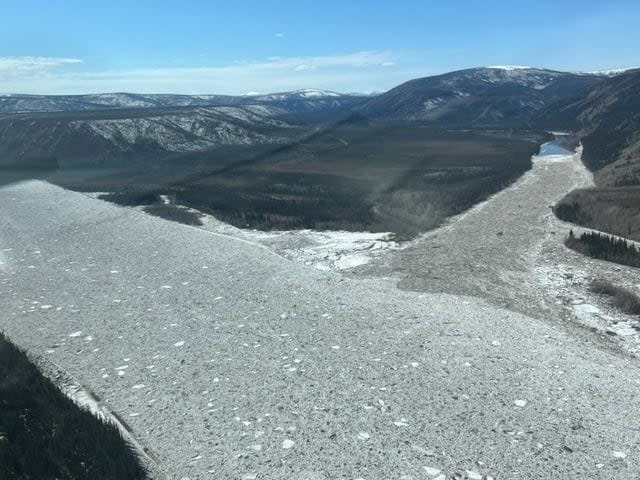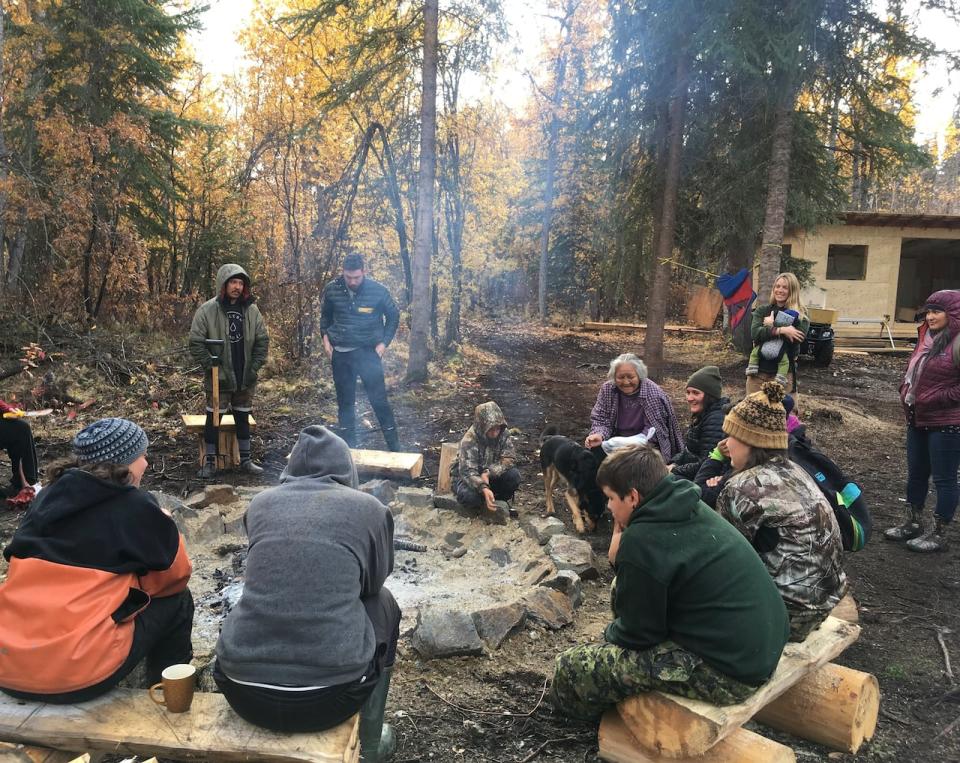'Like a washing machine': 2023 flood swept away 3 buildings at Yukon's oldest townsite, damaged several more

The final damage assessment has been done on last year's flooding at the Ch'ëdähdëk Forty Mile Historic Site, located 88 kilometres downriver from Dawson City, Yukon.
The flooding happened after an ice jam formed in May 2023, sending torrents of water and ice into the site.
The water completely swept away three historic buildings, including the Alaska Commercial Company warehouse, the fish house, and the Henry Harper cabin. The remaining eight buildings were damaged to varying degrees, and all of them were cleaved from their foundations and moved from their original locations.
That damage is in addition to downed trees, campground amenities such as outhouses that will need to be replaced, and the nearby modern buildings that were also moved by the flooding ice.
Debbie Nagano, heritage director for the Tr'ondëk Hwëch'in First Nation, said she flew in by helicopter to find the site in a state of devastation.
"At first you're in pure shock, and then you notice buildings missing, crumpled; twisted trees that are 100 years old just laying flat everywhere," Nagano said.
"The ice was just like a washing machine right in the centre of Forty Mile."
According to Rebecca Jansen, the Yukon government's historic sites manager, crews from the government and Tr'ondëk Hwëch'in spent a big part of last summer assessing the damage. She said the flood's impact was initially "overwhelming."
Forty Mile was the Yukon's first townsite. It was established in 1887, and its population peaked at 700 people. The historic townsite is co-owned by the Yukon government and the Trʼondëk Hwëchʼin.
The area, combined with eight nearby sites, became part of a UNESCO World Heritage site last year.
Damage blocking access to cultural activities
The area has been used for many years, long before and long after the town of Forty Mile was established in the 1880s.
Tr'ondëk Hwëch'in citizens continued to fish, hunt and collect berries there until the flood blocked all access to the area last spring. Nagano says the site's destruction has cultural repercussions beyond its historic value.
"That's a good area for moose, caribou, sheep, every type of fish you could think of was coming up the river or going down," Nagano said.
"Forty Mile was established there because it was a good area, and it was known to First Nations people."
The Tr'ondëk Hwëch'in First Nation has been using the site, called Ch'ëdähdëk in Hän, to promote citizens getting out on the land. The area is used for cultural camps, as a space for education and for connection with elders.

The Trʼondëk Hwëchʼin First Nation holds culture camps at the historic town site of Forty Mile. Those won't be happening before extensive work is done to make the site accessible again. (Allison Kormendy)
There would traditionally be a hunting camp near the Forty Mile townsite in the fall. Nagano says they are looking ahead to regaining access for the next hunting season.
"Now it's unsafe to have people there. A lot of community members want to help out and sort it out and clean it up, but we just can't have access to it right now," Nagano said.
There's substantial work to be done in the meantime, assessing the damage and clearing the trails. Nagano called it "contracts-within-contracts"-worth of work.
Request for proposals to help repair, assess the area
The Yukon government will be contracting external experts to help build a conservation plan, explore repair options and potentially provide flood mitigation advice.
Jansen said they're looking for contractors who are experienced at working in remote areas, working with First Nations communities, and ideally with UNESCO World Heritage Sites. She said consultation will be done with Tr'ondëk Hwëch'in citizens to explore the best possible future for the area.
"We recognize that the site's significance doesn't just come from tangible heritage," Jansen said.
"We're really looking for additional guidance and insight on what our options are, since we obviously don't want to come up with a solution that's going to put the site at risk again."
Selected consultants will be taken to the site with Tr'ondëk Hwëch'in youth and elders, and to engagement sessions in Dawson City before they develop any draft plans.


